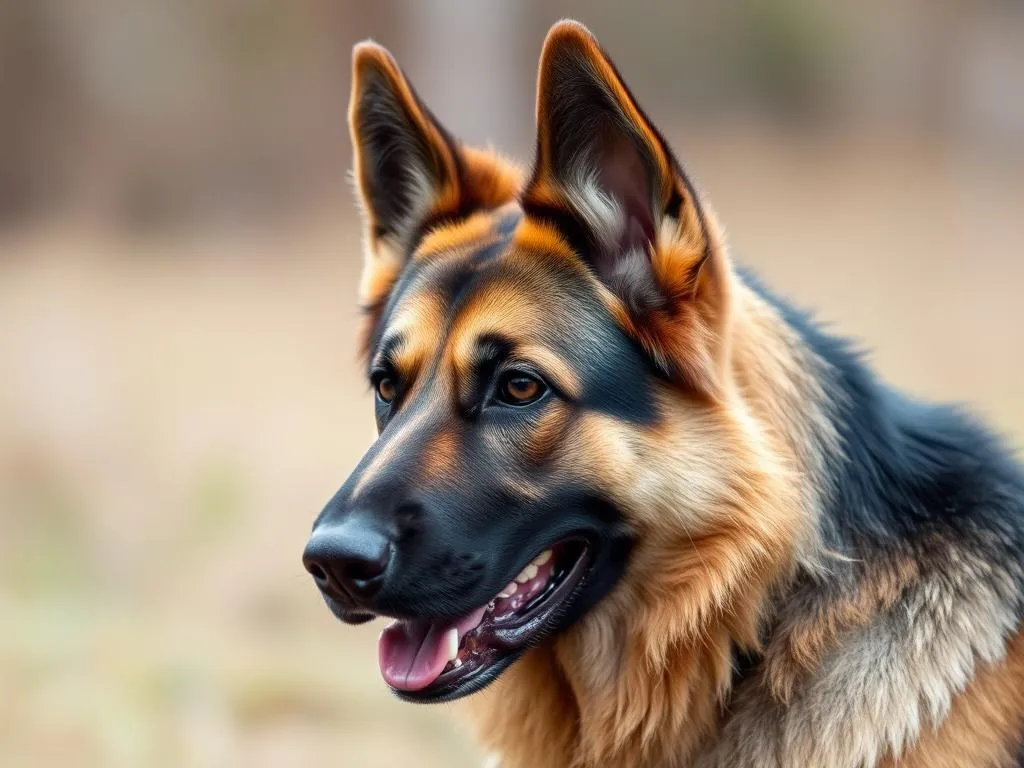
The Czech German Shepherd dog breed stands out as a distinctive line within the broader German Shepherd breed. While all German Shepherds share a common ancestry, the Czech line has developed unique traits and characteristics shaped by its specific historical context and purpose. Understanding these differences is essential for anyone considering this breed, whether for companionship, work, or sport.
History of the Czech German Shepherd
Origins of the German Shepherd
The journey of the German Shepherd began in the late 19th century in Germany, where various herding dogs were selectively bred. The primary objective was to develop a versatile and intelligent working dog. The breed’s creator, Max von Stephanitz, played a pivotal role in its development, emphasizing characteristics such as strength, loyalty, and intelligence. His vision led to the establishment of the breed standard in 1899, marking the official recognition of the German Shepherd.
Emergence of the Czech Line
The Czech German Shepherd line emerged after World War II, a period during which the breed was further refined for specific tasks, particularly in police and military roles. The Czech government recognized the need for reliable working dogs and focused efforts on breeding German Shepherds that excelled in these functions. The emphasis was placed on traits such as courage, trainability, and a strong work ethic, leading to the development of the Czech line that we know today.
Distinctions from Other Lines
While the Czech German Shepherd shares a common ancestry with both the West German and East German lines, significant differences exist. The Czech line is known for its pronounced working abilities, often being more driven and assertive compared to its counterparts. This line prioritizes functionality over conformation, resulting in a dog that is more physically robust and has a focused temperament, ideal for working roles.
Physical Characteristics
Size and Weight
Czech German Shepherds typically range in height from 22 to 26 inches at the shoulder, with males generally being larger than females. Males usually weigh between 66 to 88 pounds, while females typically weigh between 49 to 71 pounds. This size makes them suitable for various roles, from family companions to working dogs.
Coat and Color
The coat of the Czech German Shepherd can be either short or long, with a dense undercoat. Common color patterns include black and tan, sable, and solid black. The coat is designed to withstand various weather conditions, providing insulation and protection.
Distinctive Features
Czech German Shepherds tend to have a more pronounced and muscular build compared to other lines. Their heads are broad with a strong jaw, and their ears are typically erect and pointed. This distinctive appearance, combined with their powerful stature, makes them easily recognizable among other German Shepherd types.
Temperament and Behavior
General Temperament
The Czech German Shepherd is known for its confident and assertive nature. These dogs are intelligent, alert, and highly trainable, making them excellent working companions. While they can be protective of their family, they also possess a gentle side, particularly with children. Understanding their temperament is crucial for potential owners, as these dogs thrive with consistent training and socialization.
Intelligence and Trainability
One of the most notable attributes of the Czech German Shepherd is its high intelligence quotient (IQ). This breed excels in various training environments, whether in obedience, agility, or specialized working roles. Positive reinforcement methods are often the most effective, allowing the dog to learn through rewards and praise. Consistent, structured training sessions help channel their energy constructively.
Socialization Needs
Early socialization is paramount for Czech German Shepherds. Exposing them to different environments, people, and other animals during their formative months helps mitigate potential behavioral issues. Engaging in regular socialization activities fosters a well-rounded, confident dog that can adapt to various situations.
Health and Lifespan
Common Health Issues
Like many breeds, the Czech German Shepherd is prone to certain genetic health issues. Common concerns include hip and elbow dysplasia, which can lead to arthritis and mobility issues. Regular veterinary check-ups, a balanced diet, and maintaining a healthy weight can aid in preventing these problems. Responsible breeding practices also play a vital role in reducing genetic predispositions.
Lifespan Expectations
The average lifespan of a Czech German Shepherd ranges from 10 to 14 years. Factors influencing longevity include genetics, diet, exercise, and healthcare. Providing proper nutrition and regular veterinary care significantly contributes to a longer, healthier life.
Nutrition and Care
A high-quality diet tailored to the dog’s age, size, and activity level is essential for maintaining optimal health. Czech German Shepherds benefit from a balanced diet rich in protein, healthy fats, and essential vitamins. Regular exercise and mental stimulation are also crucial, as they help prevent obesity and behavioral problems.
Training and Exercise Requirements
Essential Training Techniques
Training a Czech German Shepherd requires a commitment to positive reinforcement techniques. Utilizing rewards-based training fosters a strong bond between the dog and owner while encouraging desired behavior. Basic obedience training should start early, with a focus on commands such as sit, stay, and come.
Daily Exercise Needs
Daily exercise is critical for the Czech German Shepherd, as these dogs possess high energy levels. Ideally, they should engage in at least 60 to 90 minutes of physical activity each day. Activities can include walks, jogging, playing fetch, or engaging in agility exercises. Mental stimulation, such as puzzle toys or obedience drills, is equally important to keep their minds engaged.
Specialized Training
The Czech German Shepherd is often utilized in police and military roles due to its strong work ethic and trainability. They excel in specialized training programs that focus on protection, search and rescue, and detection work. Additionally, many Czech German Shepherds participate in competitive sports, showcasing their abilities in obedience, tracking, and agility competitions.
Living with a Czech German Shepherd
Ideal Living Conditions
Czech German Shepherds thrive in environments that provide ample space for exercise and play. While they can adapt to apartment living, having access to a secure outdoor area is highly beneficial. A home with a yard allows for off-leash play and training, which is crucial for their physical and mental well-being.
Compatibility with Families and Children
This breed is particularly well-suited for families, especially those with children. Czech German Shepherds are known for their protective instincts and gentle demeanor, making them excellent companions for kids. Teaching children how to interact respectfully with the dog fosters positive relationships and encourages responsible pet ownership.
Grooming Needs
Grooming a Czech German Shepherd requires regular attention to their coat. Brushing should be done at least once a week, with more frequent grooming during shedding seasons. Regular baths, nail trimming, and dental care are also essential components of maintaining their overall health and hygiene.
Conclusion
The Czech German Shepherd dog breed offers a unique combination of intelligence, loyalty, and versatility. With a rich history rooted in working roles, this breed has distinct characteristics that set it apart from other German Shepherd lines. For prospective owners, understanding the specific traits, training needs, and care requirements is vital for fostering a rewarding relationship with this remarkable breed. Embracing responsible ownership and providing consistent training will ensure that the Czech German Shepherd thrives as a beloved companion and reliable working partner.









